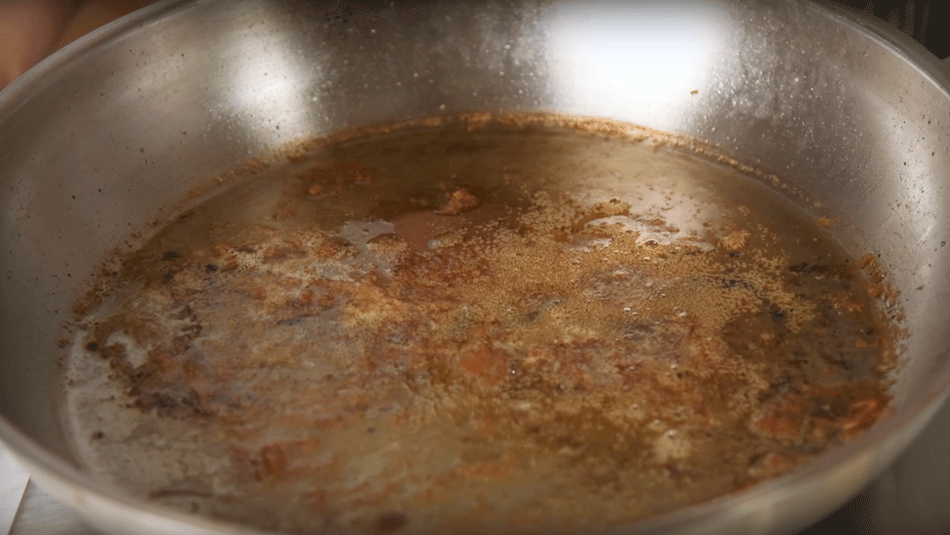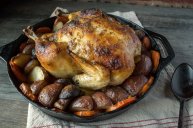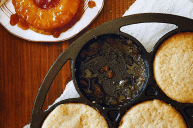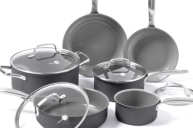When you're ready to whip up your morning omelette or prepping your Chimichurri Marinated Fajitas for dinner, which pan are you using? Of course it's a saucepan, but what is it made from? Cast iron for heat? Perhaps nonstick cookware for easy cleaning? The cooking pan conundrum is a question that wracks the brain of every home chef. When in doubt, many of us are guilty of ignoring pan type altogether and opting for size. Well now it's time to say 'no more' to using the wrong pan for the job and start cooking right with a little help from the folks over at Tasty. Discussing the three main varieties of pans, Tasty shows us how to use our cookware set properly in everyday cooking.
Videos by Wide Open Country
As a beginner home cook, you're no doubt familiar with nonstick pans. They are super easy to clean and seem to tackle almost every meal with their handy non-stick coating. Unfortunately, these fry pans with a smooth cooking surface don't fit all meals. Nonstick is best for your delicate dishes, like getting a nice golden coloring on your savory grilled cheese or delicate flaky fish.
Leave the high heat to the beloved cast iron skillet. Versatile and durable, use in it on the stove, in the oven, or on top of the outdoor grill. Stainless steel cookware, on the other hand, is your best bet when it comes to tackling a range of cooking from baked goods to using with a double boiler for melting chocolate. It may sound intimidating, but with the right amount of oil and heat, you can use your pan like a chef.
Each pan has its own benefits and drawbacks when it comes to cooking. While your basic grill pan or sauté pan is the perfect size, the material is more important than ever. The important thing to consider is what meal you are preparing, and how to appropriately take care of your cookware.
1. Nonstick
Use high quality nonstick frying pans as your go-to pan for your lighter fare, and remember to use only silicon or wooden utensils. Metal will scratch the nonstick surface. A nonstick skillet can also be used to make crepes if you're lacking a specific crepe pan, and is also perfect for omelets if you lack a dedicated French omelette pan (don't we all).
2. Cast Iron
Cast-iron pans will cook everything from searing burgers to frittata, but will require a little more tender love and care. Cast iron is often available for lower prices than stainless steel, with the same lifetime guarantee. Additionally, you can find enameled cast iron on many popular Dutch ovens, like this Le Creuset model. The ceramic coating acts like a nonstick surface while the cast iron material holds high heat incredibly well. If you're lacking a deep fryer, your cast iron Dutch oven will do just the trick.
Be sure to treat your pan before using it, and keep it well seasoned. If you neglect it, it will turn to rust even in your home kitchen. However, if you follow the five steps seen here, you can restore your rusty pan.
3. Stainless Steel
Stainless steel no doubt combines the high heat factor of cast iron with the ability to cook more delicate foods, and the same can be said for copper cookware in particular. Built tough for the stove or oven, stainless steal is the way to go if you want a nice sear, say, on chicken. With a crisp, golden skin, toss it in the oven to achieve a juicy, tender center.
You can also use it for salmon fillets, risotto, and even eggs. If you don't have a paella pan, your largest stainless steel pan will do the trick. Just be sure when using these pans to coat the pan in oil and preheat before cooking. This will prevent food from sticking to the pan.
Now that you're a cooking pan aficionado, test out your skills with one of these 15 Cast Iron Skillet Recipes.




